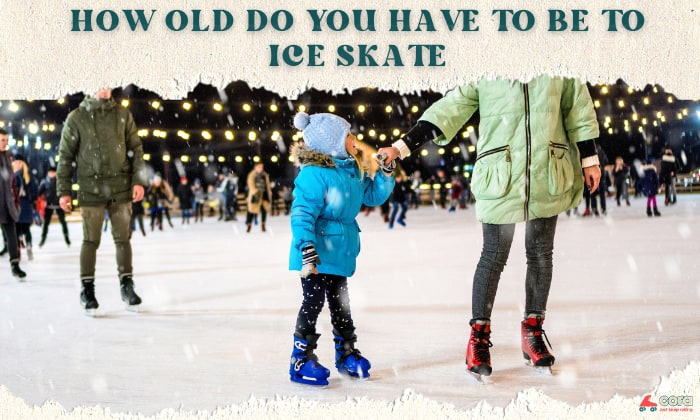If you are looking for a fun and exciting activity to introduce your child to, why not teach them how to roller skate? This activity is not only a great way for kids to stay active and healthy, but it also helps improve balance and body coordination.
Use this guide on how to teach a kid to roller skate to help you with the process!
Page Contents
6 Steps to Teach a Kid to Roller Skate?
Before you go into any action, you should prepare safety gear for your little ones. This includes wrist guards, knee pads, elbow pads, a mouth guard, and a helmet. Show them how to wear these properly, and talk to them about the importance of using them to skate safely.
Additionally, you should get them youth roller skates. Make sure you get the right ones for their age and fit them properly. Training skates for 5 year old little boys are different from those for 3 year old boys to 4 year olds.
Additionally, it’d be better if you could find a carpeted surface for your kids to practice. Aside from being much safer to skate on, the soft surface will give them more confidence.
Step 1: Teach Them the Right Posture
The right posture is key to staying safe and having fun while skating. So, it is important for your little one to get it right.
Ask them to lean forward with their knees slightly bent and the bottom lowered. In addition, their feet should be shoulder-width apart.
Then, give them as long as they need to practice their posture. They should stand up straight and switch to the proper skating posture a few times in a row. This will help them get used to the right position and make it easier to maintain their balance on roller skates.
Within the first few times, you should catch them if they lose their balance. However, once they’ve become confident enough, instruct them to extend their arms to regain their stability.
Step 2: Teach Them to Walk in Their Skates
The next step in teaching your little one how to skate is to help them learn how to walk in their skates.
With their feet still shoulder-width apart and their knees still bent, instruct them to lift one foot up and take a step forward, followed by the other foot. Your child should repeat this process until they feel comfortable.
It is important to remind them to keep their feet in a V shape, as this will help them stay stable. To help them keep their balance better, remind them that their weight should always be placed on their heels, meaning they can squat lower if they feel like they’re losing their balance.
Step 3: Teach Them to Glide
Gliding is another essential skill that your child must learn to skate with ease. Luckily, as with other skating skills, they will be able to master it with practice.
Instruct them to take gradual steps forward and roll on one foot until they lose momentum. Then, they’ll need to switch to the other foot.
Once they have mastered this, encourage them to glide forward on their front foot by thrusting off with the back foot. Do not forget to remind them to lift their other foot while gliding to avoid toppling over. Have them bend their arms as if they were running so they can better keep their balance.
As your little one glides, instruct them to transfer their weight to one side. As they do so, they will see that their body will naturally turn to the side. Have them try this on both sides until their turns become tighter and faster.
If they cannot put this to action right away, let them practice while stationary first. Get them to lean to one side by using their weight to put pressure on the side’s foot. Next, they should repeat the process for the other side.
Step 4: Teach Them to Stop
Now, it is time to teach your little one how to stop on your roller skates.
First, have them glide slowly while keeping their skates in a parallel position. Then, demonstrate how to lean forward and confidently dig the toe stop into the ground. This will slow them down and eventually bring them to a stop.
Another way to approach it is to ease your child into the movement by having them stand in place and practice pressing each of their toes into the ground. Once they are comfortable, they can try it as they glide.
Step 5: Encourage Them to Pick Up Speed
By now, your child knows all the basic roller skating skills. They can move on to working on their speed. Remind them that posture plays a big role in how fast they can go.
Taking a lower stance and leaning forward will help them roll faster.
If they struggle to pick up speed, it is likely because they are not pushing off with the back foot and lifting the other foot up high. Make sure you remind them! They should also pump their arms to gain momentum.
Step 6: Encourage Them to Learn Tricks
When your little one is completely comfortable with the skills in the previous steps, they can learn tricks. Start with a simple one, like skating backward. Then, advance to tougher tricks. In addition, they can try to jump. This post can direct you to many skating tricks worth learning.
Going through all these steps will not automatically make your child a pro skater. The key is regular practice! You should encourage them to practice roller skating at home or enroll them into roller skating lessons for kids to hone their skills.
The latter is also a great way for your little ones to meet other skaters and learn from them. You can search for toddler learning roller skates/roller skating classes for toddlers near me!
Helpful Tips for Teaching Your Kids Skating at Home
Roller skating is a fun and exciting activity that children can learn at different ages. While there is no specific age requirement for learning how to roller-skate, it’s common for children as young as three or four years old to begin their roller-skating journey.
If you are looking to teach your kids how to skate in the comfort of your own home, there are a few helpful tips to keep in mind.
- First, start on a flat surface with plenty of room to move around without obstacles in the way.
- Second, encourage them every step of the way and understand that progress may be slow at first, but consistency will lead to improvement over time.
- Third, do not forget to take breaks and hydrate. Skating can be tiring, and it’s important to stay hydrated and avoid burnout.
- Fourth, celebrate their achievements no matter how small they may seem. Positive reinforcement will help build their confidence and encourage them to continue practicing.
- Lastly, remember, skating is meant to be fun, so make it enjoyable for both yourself and your kids!
Conclusion
Now, you know how to teach a kid to roller skate. Go ahead and carry out the seven steps to pass on your love for the sport. Cover the basics first, then advance to the tougher aspect. And always remember to be patient and encouraging. If there is anything else we can help with, we would love to! Reach out to us in the comments down below.

Harrison is a skating enthusiast who picked up the sport during her student exchange years in Canada. She has been a skating coach for children and teens for 3 years and now holds classes as a freelancer. Harrison entwines her experience leading skating classes in the content published on Cora to help readers fall in love with skating, just like she did.
















